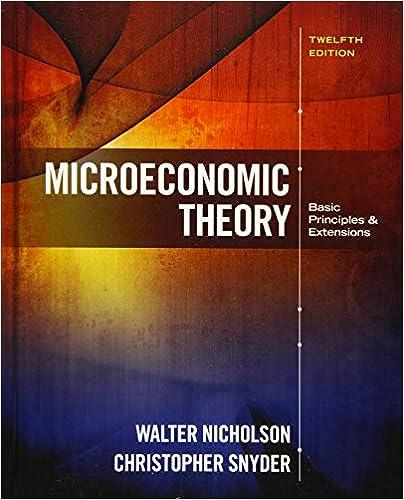Spurious Product Differentiation As we shall see in Chapter 15, a firm may sometimes seek to differentiate
Question:
Spurious Product Differentiation As we shall see in Chapter 15, a firm may sometimes seek to differentiate its product from those of its competitors in order to increase profits. In this problem we examine the possibility that such differentiation may be “spurious”—
that is, more apparent than real and that such a possibility may reduce the buyers’ utility. To do so, assume that a consumer sets out to buy a flat screen television (y). Two brands are available. Utility provided by brand 1 is given by U 1x, y12 5 x 1 500 ln11 1 y12 (where x represents all other goods). This person believes brand 2 is a bit better and therefore provides utility of U 1x, y22 5 x 1 600 ln11 1 y22 .
Because this person only intends to buy one television, his or her purchase decision will determine which utility function prevails.
a. Suppose px 5 1 and I 5 1000, what is the maximum price that this person will pay for each brand of television based on his or her beliefs about quality? (Hint: When this person purchases a TV, either y1 5 1, y2 5 0 or y1 5 0, y2 5 1).
b. If this person does have to pay the prices calculated in part (a), which TV will he or she purchase?
c. Suppose that the presumed superiority of brand 2 is spurious—perhaps the belief that it is better has been created by some clever advertising (why would firm 2 pay for such advertising?). How would you calculate the utility loss associated with the purchase of a brand 2 TV?
d. What kinds of actions might this consumer take to avoid the utility loss experienced in part (c)? How much would he or she be willing to spend on such actions?
Step by Step Answer:

Microeconomic Theory Basic Principles And Extensions
ISBN: 9781305505797
12th Edition
Authors: Walter Nicholson, Christopher M. Snyder






